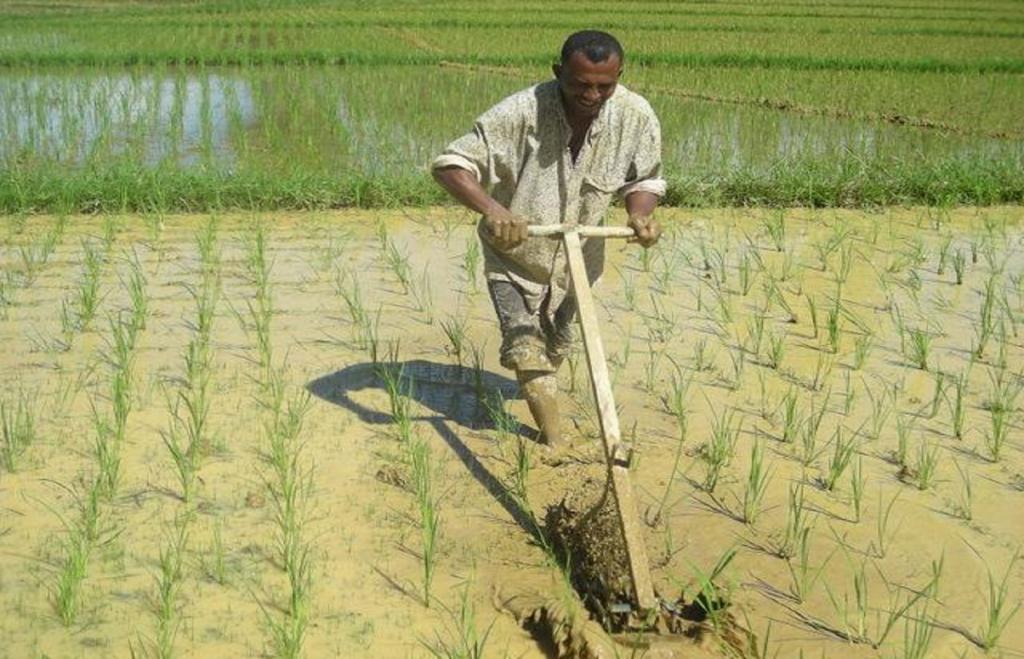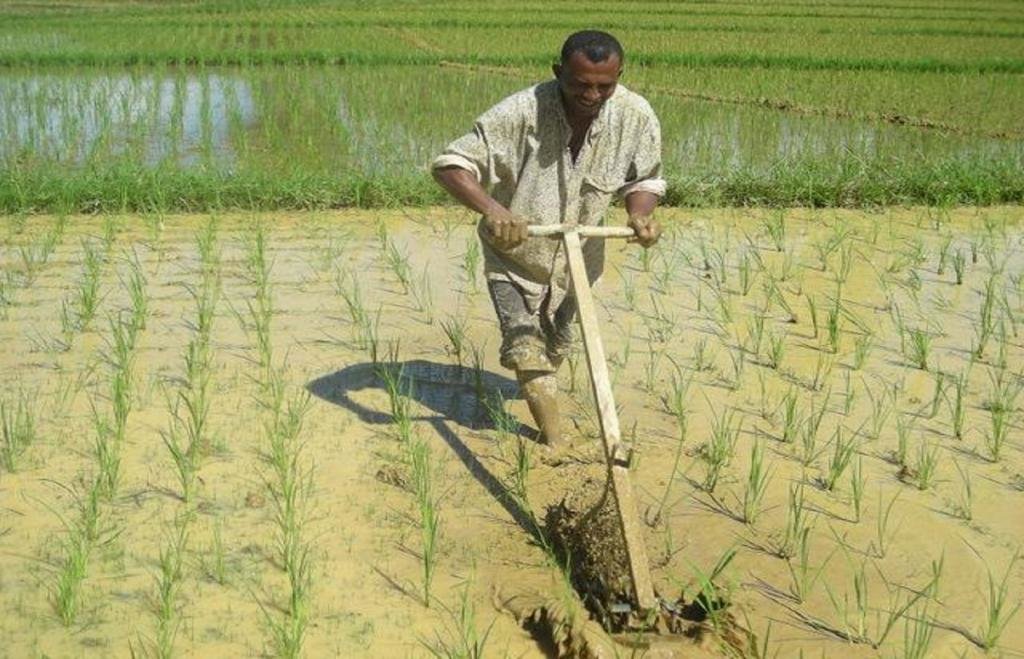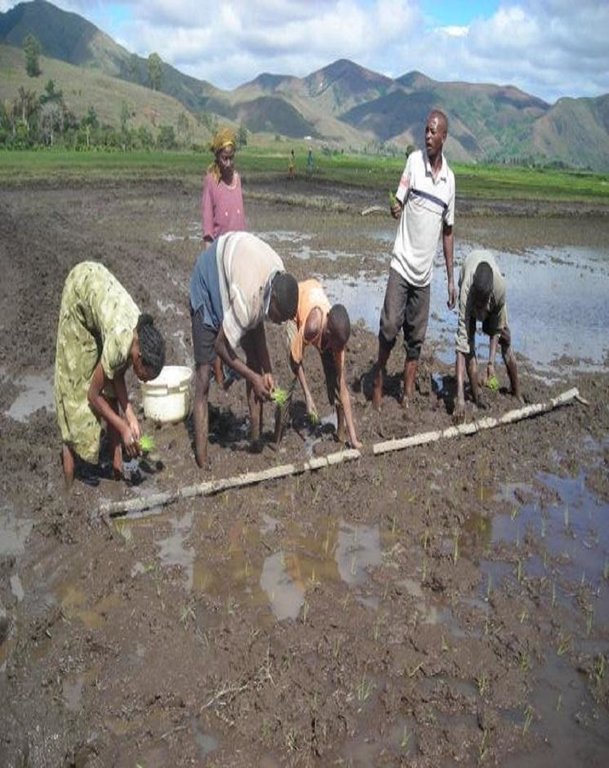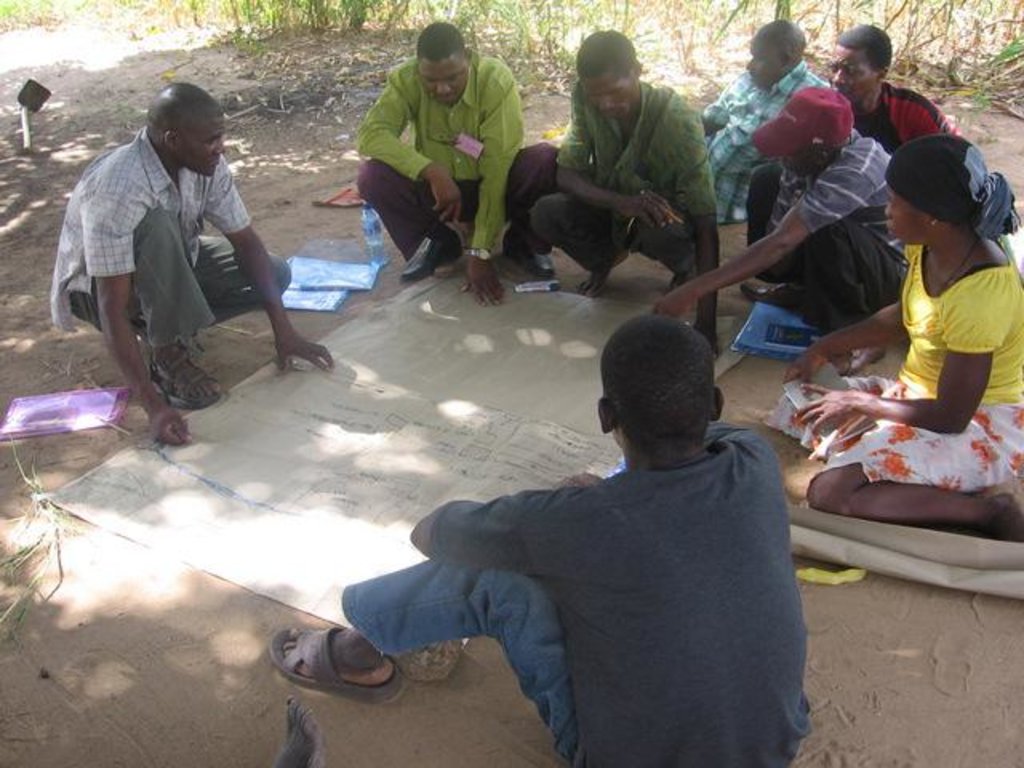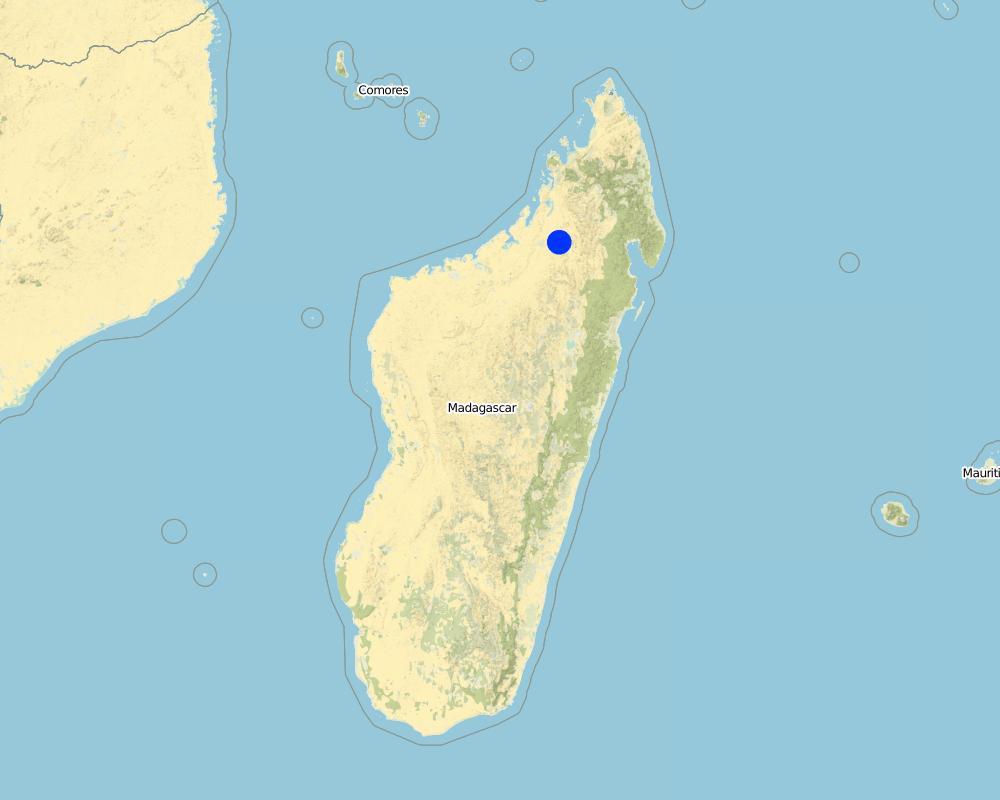Participatory Learning and Action Research approach to Integrated Rice Management [Мадагаскар]
- Шинийг нээх:
- Шинэчлэх:
- Эмхэтгэгч: Unknown User
- Хянан тохиолдуулагч: –
- Хянагч: Fabian Ottiger
approaches_2571 - Мадагаскар
Бүлгүүдийг үзэх
Бүгдийг дэлгэх Бүгдийг хаах1. Ерөнхий мэдээлэл
1.2 Арга барилыг баримтжуулах болон үнэлгээ хийхэд оролцсон хүн эсвэл байгууллагын холбоо барих хаяг
Agric. R&D consultant:
Defoer Toon
tdefoer@aliceadsl.fr
Najac, France
Франц
ГТМ мэргэжилтэн:
Wopereis Marco
wopereis@cgiar.org.
Africa Rice Center
Cotonou
Бенин
Арга барилыг баримтжуулах/үнэлэх ажилд дэмжлэг үзүүлсэн байгууллага(ууд)-ын нэр (шаардлагатай бол)
CDE Centre for Development and Environment (CDE Centre for Development and Environment) - ШвейцарАрга барилыг баримтжуулах/үнэлэх ажилд дэмжлэг үзүүлсэн байгууллага(ууд)-ын нэр (шаардлагатай бол)
Africa Rice Center (AfricaRice) - Кот д'Ивуар1.3 WOCAT-аар баримтжуулсан өгөгдлийг ашиглахтай холбоотой нөхцөл
Эмхэтгэгч болон гол мэдээлэгч хүн(хүмүүс) WOCAT аргачлалаар баримтжуулсан мэдээллийг ашиглахтай холбоотой нөхцлийг хүлээн зөвшөөрсөн:
Тийм
2. ГТМ Арга барилын тодорхойлолт
2.1 Арга барилын товч тодорхойлолт
The Participatory Learning and Action Research approach to Integrated Rice Management (PLAR-IRM) is a bottom-up, social and experiential learning approach, leading to sustainable agricultural improvements, based on mutual support and communication among farmers.
2.2 Арга барилын дэлгэрэнгүй тодорхойлолт
Арга барилын дэлгэрэнгүй тодорхойлолт:
Aims / objectives: Innovation and agricultural change is aimed for, through capacity strengthening of all major stakeholders involved in the rice sub-sector. IRM refers to the production system and value chain as a whole. Innovation is not limited to technological change; it also includes time management and the building of social networks and institutions for mutual collaboration between farmers and other stakeholders within the rice value chain. A step-wise, self-discovery learning mode encourages the stakeholders to find solutions for their own site-specific problems. During the first years, groups of 25-30 producers are supported by a programme facilitator who animates the learning and innovation sessions. The main instruments are the learning modules dealing with specific crop management practices, harvest and post-harvest practices (involving processors and entrepreneurs also), as well as the agro-ecological and socio-economic conditions of rice production. The sessions aim to strengthen farmers’ and other rice stakeholders' capacity to observe, analyze, interpret, make decisions, innovate and share knowledge and experiences. PLAR is based on locally relevant knowledge, practices and skills. Exchanges about current practices, and their logic or justification, are the starting point in all modules.
Methods: In a learning-by-doing approach farmers are encouraged to try out any new ideas identified during PLAR sessions on some parts of their fields reserved for new practices (“innovation space”). This allows them to assess the impact of such innovations on their rice yield, or on the profitability of rice growing and the rice business as a whole, and consequently to adapt and fine-tune the measures taken according to their needs. These innovation spaces are regularly visited as part of learning sessions for knowledge sharing between farmers. Since 2005, innovations in land preparation, early transplanting of seedlings, weeds and water management - basically without external inputs - have resulted in three times higher yields, benefitting thousands of farmers. Rice value chain activities started in 2008 with a view to empowering farmers' position within the chains and improving the competitiveness. Groups are unifying into PLAR centres with common marketing of rice, and contract input providers and rice processors.
2.3 Арга барилын зурагууд
2.5 Арга барил нэвтрүүлсэн улс орон / бүс нутаг / байршил
Улс:
Мадагаскар
Байршлын дэлгэрэнгүй тодорхойлолт:
Sofia Region
Map
×2.7 Арга барилын төрөл
- төсөл / хөтөлбөр дээр үндэслэсэн
2.8 Арга барилын үндсэн зорилго, зорилтууд
The Approach focused mainly on SLM with other activities (value chain develop¬ment: collective storage and marketing of rice; contractual arrangements with input providers and rice processors)
Sustainably improving food security, livelihoods and incomes of poor rice farmers by boosting the profitability of rice production and increasing the efficiency and competitiveness of the rice sub-sector; Capacity strengthening of all stake-holders involved in the rice-subsector
The SLM Approach addressed the following problems: Low yields in rice production; Most farmers live below subsistence level; Absence of government and NGO support; Limited access to markets, lack of infrastructure
3. Оролцогч талуудын оролцоо ба үүргүүд
3.1 Арга барилд оролцогч талууд болон тэдгээрийн үүргүүд
- Орон нутгийн газар ашиглагч / орон нутгийн иргэд
rice farmers
marginalised poor rice farmers are targeted
- Хувийн хэвшил
private service providers (e.g. input suppliers), rice processors and buyers
- Орон нутгийн захиргаа
- Олон улсын байгууллага
Aga Khan Foundation
3.2 Арга барилын янз бүрийн үе шатанд орон нутгийн газар ашиглагчид / бүлэглэлүүдийг татан оролцуулах
| Орон нутгийн газар ашиглагч / орон нутгийн иргэдийн оролцоо | Хэн оролцсоныг тодорхойлж, үйл ажиллагааг тайлбарлана уу | |
|---|---|---|
| санаачлага/идэвхжүүлэлт | интерактив | |
| Төлөвлөгөө | интерактив | |
| Хэрэгжилт | интерактив | |
| Мониторинг/ үнэлгээ | үгүй | |
| Research | үгүй |
3.4 ГТМ-ийн технологи/технологиуд сонгох шийдвэр
Хэрэгжүүлэх Технологи/Технологиудын сонголтыг хийж шийдвэр гаргасан хүнийг тодорхойлно уу:
- Газар ашиглагч дангаараа (өөрийн санаачлага)
Тайлбар:
Decisions on the method of implementing the SLM Technology were made by mainly by land users supported by SLM specialists
4. Техникийн дэмжлэг, чадавхи бүрдүүлэх, мэдлэгийн менежмент
4.1 Чадавхи бэхжүүлэх/сургалт
Газар эзэмшигчид / бусад оролцогч талуудад сургалт явуулсан уу?
Тийм
Хэн сургалтанд хамрагдсан бэ:
- Газар ашиглагчид
- хээрийн ажилтан / зөвлөх
Сургалтын хэлбэр:
- Ажил дээр
- фермерээс -фермер
Хамрагдсан сэвдүүд:
crop management practices, harvest and post-harvest practices (incl. storage, marketing), socio-economic and ecological conditions of rice farming; curriculum based on needs assessment
4.2 Зөвлөх үйлчилгээ
Газар ашиглагчдад зөвлөх үйлчилгээ авах боломжтой байдаг уу?
Тийм
Зөвлөх үйлчилгээ үзүүлсэн эсэхийг тогтоо:
- Газар ашиглагчийн талбай дээр
Тодорхойлолт / тайлбар:
Name of method used for advisory service: modular learning sessions guided by a facilitator, farmer-to-farmer extension; Approach is based on indigenous knowledge
4.5 Судалгаа
Судалгаа арга барилын хэсэг нь байсан уу?
Тийм
Дэлгэрэнгүй мэдээллийг өгч, хэн судалгаа явуулсныг бичнэ үү:
crop management practices
Research was carried out on-farm
5. Санхүүгийн болон гадаад материаллаг дэмжлэг
5.1 ГТМ-ийн Арга барилын бүрэлдэхүүн хэсгийн жилийн төсөв
Хэрэв жилийн төсөв тодорхойгүй бол хягаарыг тодруулна уу:
- 100,000-1,000,000
Тайлбар (жнь: санхүүжилтийн гол эх үүсвэр / гол хандивлагчид):
Approach costs were met by the following donors: international: 10.0%; national non-government: 30.0%; private sector: 10.0%; local community / land user(s): 50.0%
5.2 Газар ашиглагчдад санхүүгийн / материаллаг дэмжлэг үзүүлсэн
Технологи / технологийг хэрэгжүүлэхэд газар ашиглагчид санхүүгийн / материаллаг дэмжлэг авсан уу?
Тийм
5.3 Тодорхой зардлыг даахад чиглэсэн дэмжлэгт (хөдөлмөрийн хүчийг оролцуулаад)
- Тоног төхөөрөмж
| Ямар хөрөнгө оруулалт татаасаар олгогдсоныг заана уу | Ямар талбайн хэмжээнд | Тэтгэмж, урамшууллыг тодорхойлно уу |
|---|---|---|
| Багажууд | Бүрэн санхүүждэг | Two sarcleuses (weeding equipment) per starting group are provided for free and remain property of the group |
Тайлбар:
Two sarcleuses (weeding equipment) per starting group are provided for free and remain property of the group
5.4 Кредит
Арга барилын хүрээнд ГТМ-ийн үйл ажиллагаанд зориулж зээлд хамрагдсан уу?
Тийм
Нөхцөл байдлын тодорхойлолт (хүүгийн хэмжээ, эргэн төлөлт гэх мэт):
Interest rate charged: 2.5%; repayment conditions: Was supported by the approach in collaboration with an existing microfinance institution; loan period: 6-8 months, 2.5% monthly (!) interest rate.
6. Нөлөөллийн дүн шинжилгээ ба дүгнэлт
6.1 Арга барилын нөлөөллүүд
Арга барил нь ГТМ-ийн технологийг хэрэгжүүлж, хадгалахад газар ашиглагчдад тусласан уу?
- Үгүй
- Тийм, бага зэрэг
- Тийм, зарим
- Тийм, их
yields have increased by > 200% (on innovation spaces)
Арга барил нь эмзэг бүлгийнхнийг нийгэм, эдийн засгийн хувьд чадавхижуулсан уу?
- Үгүй
- Тийм, бага зэрэг
- Тийм, зарим
- Тийм, их
marginalised poor rice farmers are targeted
Did other land users / projects adopt the Approach?
- Үгүй
- Тийм, бага зэрэг
- Тийм, зарим
- Тийм, их
from 2005-2009 PLAR groups have increased from 6 up to 102, involving 3782 families and extended to 4200 non grouped farmers
Did the Approach help to alleviate poverty?
- Үгүй
- Тийм, бага зэрэг
- Тийм, зарим
- Тийм, их
SLM practices result into a net benefit of > 700 US$/ha
6.2 ГТМ-ийг хэрэгжүүлэх газар ашиглагчидын гол санаачилга
- үйлдвэрлэл нэмэгдсэн
- Ашиг нэмэгдсэн (боломж), зардал-үр ашгийн харьцаа сайжирсан
- Сүлжээ/ бүлэг төсөл/ хөдөлгөөнд гишүүнээр элсүүлэх
6.3 Арга барилын үйл ажиллагааны тогтвортой байдал
Газар ашиглагчид арга барилаар дамжуулан хэрэгжүүлсэн арга хэмжээг тогтвортой хадгалж чадах уу (гадны дэмжлэггүйгээр)?
- Тийм
Хэрэв тийм бол яаж гэдгийг тайлбарлана уу:
In a 2nd phase farmers who are organised in PLAR groups gradually build up the capacity to manage the innovation and mutual learning approach on their own without programme support: Farmers facilitators are trained to take over the lead of PLAR groups with backstopping from programme facilitators.
6.4 Арга барилын тогтвортой/давуу тал/боломжууд
| Эмхэтгэгч, бусад мэдээлэл өгсөн хүмүүсийн өнцгөөс тодорхойлсон давуу тал/боломжууд |
|---|
| Farmers learn basic principles of rice management and develop their own locally adapted options for improvements; the innovation comes from inside the groups. |
| Farmers build up individual and organisational capacity to find solutions to their problems and build confidence as efficient partners with other value chain actors. |
6.5 Арга барилын дутагдалтай/сул тал/аюул болон тэдгээрийн хэрхэн даван туулах арга замууд
| Эмхэтгэгч, бусад мэдээлэл өгсөн хүмүүсийн өнцгөөс тодорхойлсон сул тал/ дутагдал/ эрсдэл | Тэдгээрийг хэрхэн даван туулах вэ? |
|---|---|
| Labour intensive improvements | provision of group credit to PLAR group members in collaboration with a local microfinance institution |
| Learning intensive approach, with regular group learning sessions | PLAR groups elaborate their own learning programmes and curricula according to their availability and needs |
7. Суурь мэдээлэл болон холбоосууд
7.1 Мэдээллийн эх үүсвэр/аргууд
- Хээрийн уулзалт, судалгаа
- Газар ашиглагчтай хийсэн ярилцлага
7.2 Холбогдох бүтээлийн ишлэл
Гарчиг, зохиогч, он, ISBN:
Defoer T., M. Wopereis, S. Diack, and P. Idinoba. 2008. Apprentissage participatif et recherche action pour la gestion intégrée du riz à Madagascar: Manuel du facilitateur AKF, Genève, Suisse. Defoer T., M. Wopereis, P. Idinoba T. and Kadisha. 2006. Participatory Learning and Action Reseaerch (PLAR) for Integrated Rice Management in inland valleys in sub-saharan Africa: Facilitators’ manual. WARDA- the Africa Rcie Center, Bouaké, Côte d’Ivoire.
Гарчиг, зохиогч, он, ISBN:
Defoer T., M. Wopereis, P. Idinoba T. and Kadisha. 2006. Participatory Learning and Action Reseaerch (PLAR) for Integrated Rice Management in inland valleys in sub-saharan Africa: Facilitators’ manual. WARDA- the Africa Rcie Center, Bouaké, Côte d’Ivoire.
Холбоос ба модулууд
Бүгдийг дэлгэх Бүгдийг хаахХолбоосууд
Холбоос байхгүй байна
Модулууд
Модуль байхгүй байна


